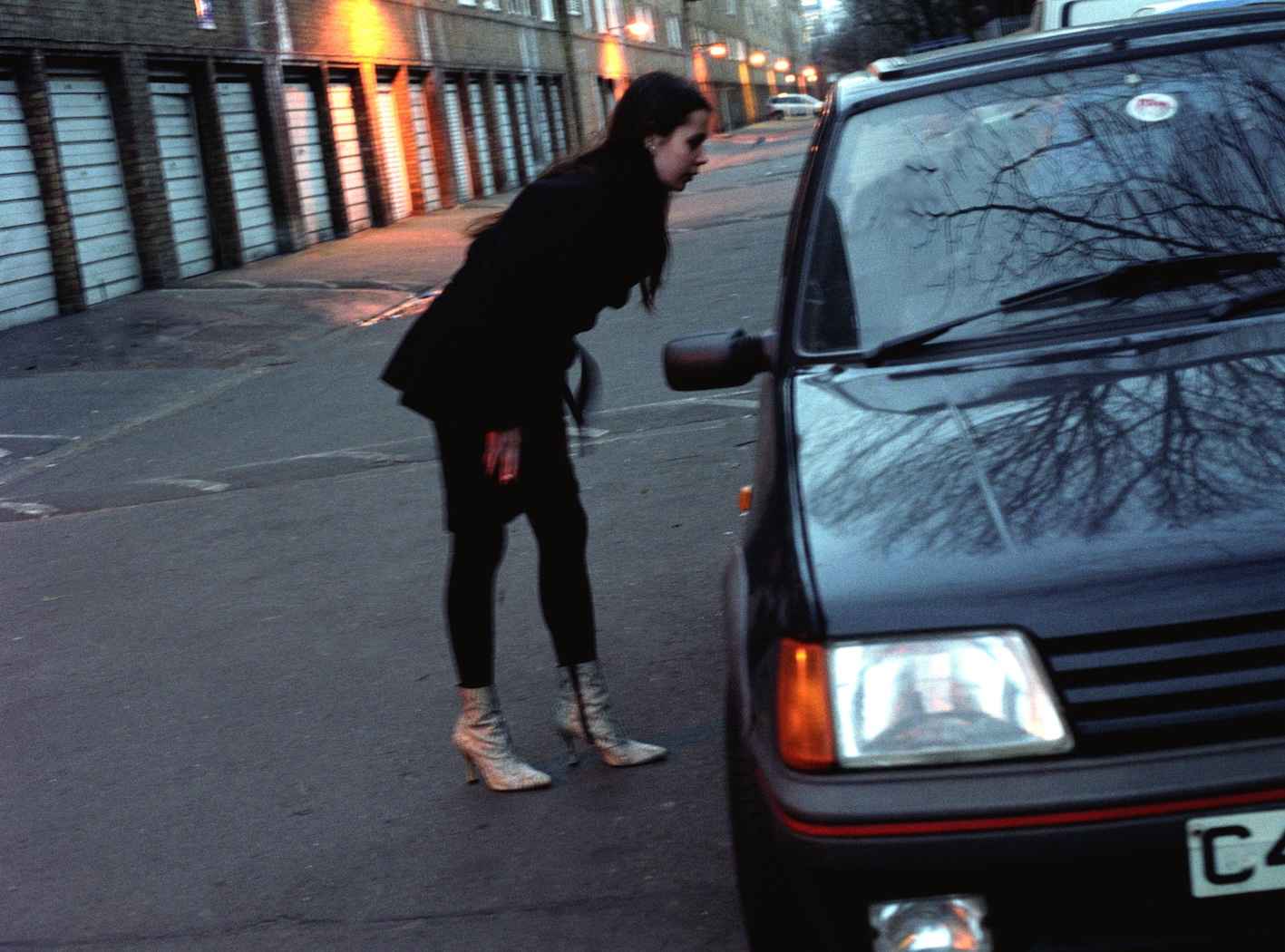Exclusive: Self-harm among women prisoners skyrockets
Half of young women prisoners harmed themselves last year—with an average of 30 incidents per woman per year, new figures suggest. Many of the women report receiving virtually no support for their mental health.
Warning - the following article contains references to self-harm and suicide. Please read with care.
Half of young women in prison are suffering a mental health crisis resulting in self-harm - despite many of them had never attempting self-harm before entering the prison system, according to a report seen exclusively by The Lead.
Data exposing the appalling state of psychological care for the most vulnerable young women in the criminal justice system have been pulled together by the women’s charity Agenda Alliance. It found young girls under 24 are the most likely to self-harm among all prisoners.
Last year, half of young female inmates (138 young women aged between 21-24) harmed themselves, each averaging around 34 incidents per year. This figure has been consistently rising over the last four years: there were just over 2,000 individual incidents of self-harm among women aged 21-24 in 2019, but by 2022 this had risen by more than 125% to just over 4,500. Many of these women have no history of self-harm behaviour before entering prison, the report has found.
Girls and young women under 24 are the most likely to self-harm among all prisoners. In 2022, there were just 277 women aged between 18-24 in custody, which represents just 0.3% of the overall prison population and just 9% of all women in custody. However, they were by far the most likely to have self-harmed, with rates surpassing all other age groups.
Ruby* was only 21 when she went to prison. A victim of domestic violence since she was just a child, she found herself embroiled in circumstances that led to her conviction for a serious crime. Sentenced to five years, from her first days on the inside Ruby’s mental health deteriorated rapidly.
“I don’t think you ever dream of ending up in prison, especially for a Muslim woman like myself. I was in the wrong place at the wrong time but there is the shame of going in, and of the community disowning you. I felt really emotional. I felt I was broken inside,” she says. “You don’t know whether prison is going to make or break you.”
Struggling with the trauma of years of abuse and the loneliness of life while incarcerated, Ruby began to self-harm. She asked wardens for help but was offered no counselling or any mental health support aside from being closely watched every 15 minutes - which did not prevent her from harming
“All I’ve ever known was pain and so what I ended up doing was inflicting pain on myself. There is only so much I can deal with on my own, but I was just left. The officers just kept saying, ‘you’ll be alright’,” she says. “I was only seen as a number in custody. I was invisible to them. They never helped me. They never took the time to sit down and see if I was alright. It was all paperwork and filling out a file. Nobody really cares.”
Ruby’s mental health continued to decline until she attempted suicide while under the care of prison guards. Despite that, she was still unable to get psychological support until after leaving prison - which she did after serving 2.5 years.
Now 30, with the help of a charity for female Muslim prisoners, Ruby has managed to get her life back on track. Though still estranged from her family, she is living in Yorkshire, is in employment, and has been accepted onto a degree course.
But in the 10 years since Ruby’s struggles, the mental health of most young female inmates has dramatically worsened.
A cycle of neglect
Mental health among young female inmates is extremely poor. In the year 2021-22, 80% of young women surveyed by Her Majesty’s Inspectorate of Prisons reported having mental health problems, compared to only 19% of young women in the general population. And of those, 57% said they had thought about harming themselves while incarcerated. Of these women, less than one third said they felt cared for by prison staff.
This is particularly troubling because half of all girls and women in custody have spent time in local authority care, suggesting a cycle of neglect that leads to mental health crisis. The transition from care services to adult social care support at 18 can be a particularly vulnerable period for care leavers - with little stability and too often leading to contact with the criminal justice system.
Policy advisors advocating for vulnerable women and girls fear that because young adult women make up such a small proportion of those in prison, their specific needs are being constantly overlooked - and their vulnerability is being exacerbated by time spent in prison. The Agenda Alliance briefing paper, entitled ‘A Call To Action’, warns that because prison sentences for young women are often short they do not lead to “meaningful rehabilitation”, and as a result can actually be further damaging to women’s lives.
“Prisons are scary places where women’s levels of distress are very high,” says Jessica Southgate, deputy chief executive of Agenda Alliance, who warns that self-harm has now become “normalised’ among the female prison population. “The girls and young women who are in contact with the justice system have already experienced high levels of trauma and to be thrust into a system that retraumatises them is really frightening. It also speaks to the really serious amounts of psychological pain that many of the women are going through.”
Southgate says the women she has worked with describe turning to self-harm in prison as a way of coping with their distressing thoughts and feelings about imprisonment, and “the reality of what they’re facing” - which may include witnessing the harm of others and attempts at suicide among other inmates.
“For many of them, not having a background of self-harming, they’re then going into a place that isn’t designed to meet their needs, with very little support and very few coping skills. It’s really shocking, but it doesn’t surprise us that many of them turn to self-harm as a means of coping,” Southgate says.
The report has been published as an attempt to highlight and address the gap in information about women and girls in the justice system, and how it affects their lives. As it states: “There is a lack of gender-specific reporting and monitoring of outcomes for young women in the criminal justice system, which makes it challenging to obtain and analyse data relating to their needs and experiences.”
In 2018, when a government strategy for female offenders was published, there was cross-party support for reducing the use of custody for young women entering the justice system. The current government has recommitted to reducing the prison population overall, and has promised a specific strategy aimed at tackling the issues faced by the youngest women in the prison estate. However, this is yet to be published.
But those working with vulnerable women say the recent sharp rise in self-harming behaviour among girls and women in prison is a direct result of the backdrop of more than a decade of austerity and huge cuts in public services.
“It’s not surprising that you end up with this perfect storm where girls and young women are falling through the gaps and being let down at a really young age,” says Southgate.
“Prison is not a place of safety”
What is shocking is that the risks and prevalence of self-harm among young women have been known about for more than a decade, yet there has been little practical action to focus on mental health treatment inside prisons.
In 2007, a report into prison safety for women commissioned by the the Labour government following a spate of inmate suicides demonstrated very similar issues with suicidal ideation and self-harm.
The Howard League for Penal Reform, a group which campaigns for improvements in the prison system, describes young women under 24 as the “cohort of most concern”, particularly as the justice system still wrongly considers prison a place to keep vulnerable women - who may be at physical risk in the community - safe. This means they can be sent to prison even when the crime they are awaiting conviction or sentencing for may be unlikely to result in a formal prison sentence. That dynamic is known to lead to deteriorating mental health and a higher risk of self-harming.
“Prisons are institutions that were designed with men in mind and they are not suitable places for women in distress,” says director of campaigns Andrew Neilson. “We have been campaigning for a long time to stop the use of remand for protection, and that particularly affects women. The court will remand them to custody because there is nowhere else to put them, but if that’s the case they should be in hospital. This absolutely underlines the fact that prison is not a place of safety and is not a place that someone should be put for their own protection.”
For campaigners, the staggering rise in self-harm among young women in prison only highlights the fact that these prisoners are more likely to hurt themselves than the general public, and are served very poorly by a prison sentence. The Agenda Alliance report concludes: “Too often, young women are blamed, criminalised, and driven further into the system, while simultaneously being denied access to meaningful support. Consequently, they face escalating risk.”
For Southgate, the only way to see policies change in a way that will prevent self-harm among incarcerated women is to listen to the voices of those, like Ruby, who have been through it. “I have never been in a room where a young woman has been brave enough to share her experience and ideas for change where people have been unmoved,” she says.
Take action:
- Write to your local MP to demand an end to imprisonment being used as a form of remand for the protection of vulnerable young women.
- Contact the MPs on the All-Party Parlimentary Group on Women in the Criminal Justice System to find out more about their work and suggest ideas for change.
- Donate to, or volunteer for a charity that works with women who have had contact with the prison service or criminal justice system.
If you have been affected by the topics highlighted in this article, reach out to The Samaritans - call them for free, any time: 116 123
The Lead is now on Substack.
Become a Member, and get our most groundbreaking content first. Become a Founder, and join the newsroom’s internal conversation - meet the writers, the editors and more.





